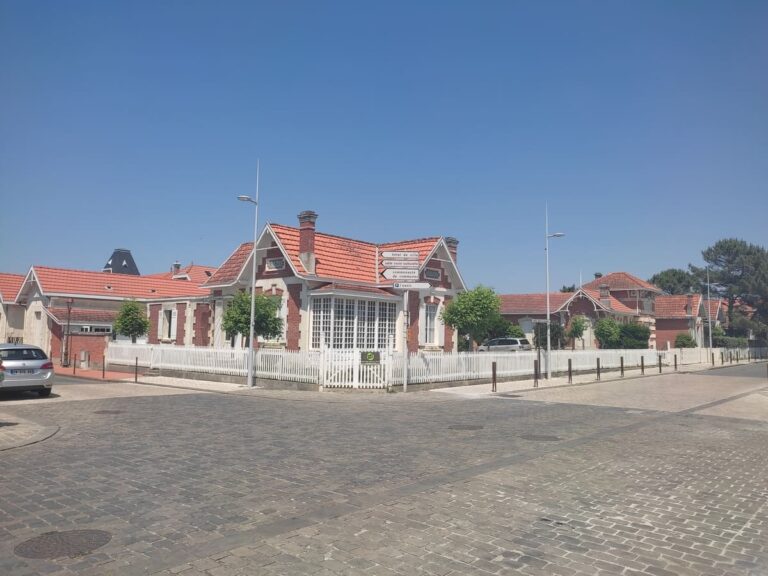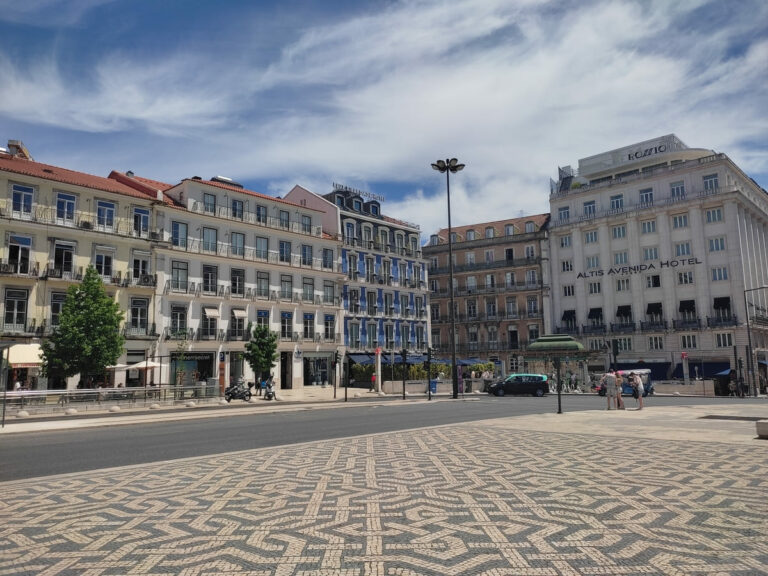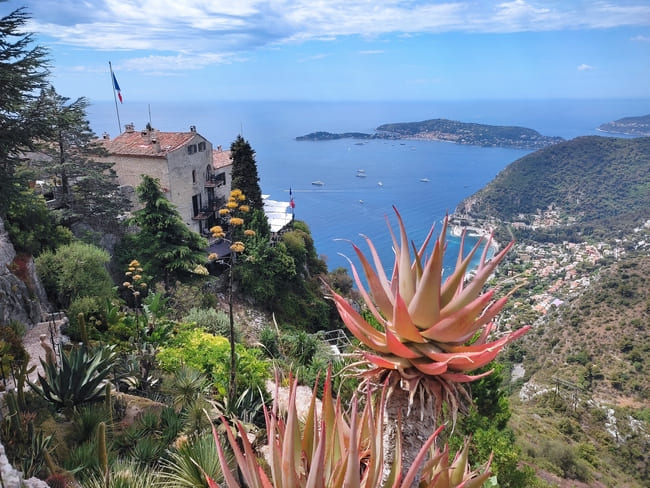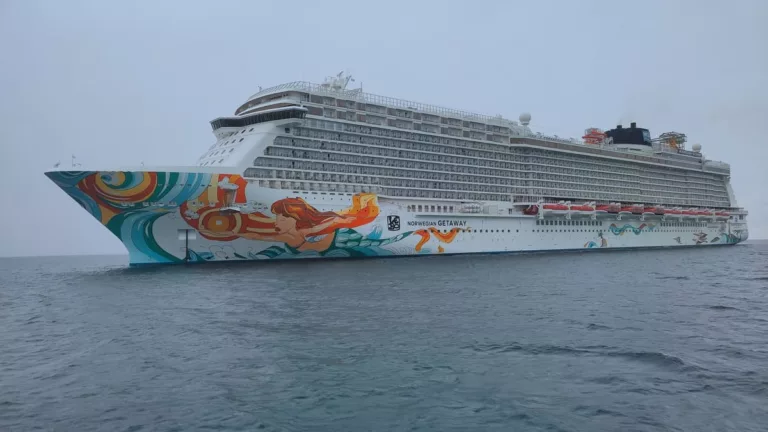WHAT IS A TENDER PORT?
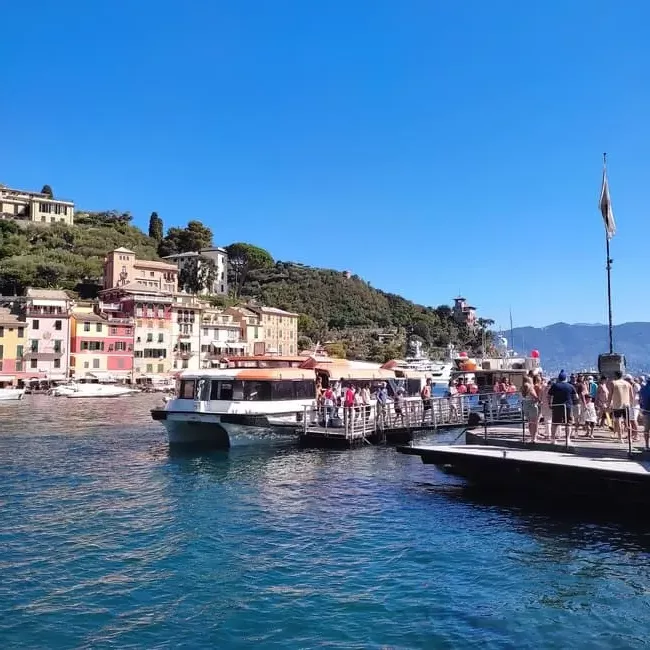
The term “tender port” (or alternatively just “tendering”) shows up regularly on cruise itineraries. However, many first-time cruisers have no clue what this actually means. If you are planning your first cruise, you may wonder what a tender port is and whether it makes a difference to you.
While most ports do not require tendering, there are still quite a few that do. I have been on over a dozen cruises and on most of them we had at least one tender port so I have learned which mistakes to avoid and am happy to share my experience with you.
Read on to find out what it means, why you should care, and what to expect!
What is tendering?
In most ports, cruise ships will dock at a pier and you can basically just walk off the ship onto dry land.
However, in tender ports the ship will anchor out at sea and passengers are shuttled in small boats (also called “tender boats”) to the pier.
Why are there tender ports?
Ships generally tender in ports because:
- there is no proper pier;
- the pier is not big enough to accomodate the ship;
- the water close to the pier is not deep enough for the ship; or
- all the berths are already taken up by other ships
In short, cruise ships generally tender because they are not able to dock at the pier.
This also means that bigger ships will have more tender ports as smaller ships may be able to use the pier. However, some very big cruise ship avoid ports that would require tendering as the tendering operation would be too difficult.
What are the disadvantages of a tender port?
Tender ports have two main disadvantages compared to regular ports.
1. Tender ports are more likely to be skipped in bad weather
Due to the process of transferring passengers to smaller boats and riding in those tender boats, getting to land is more intricate than just walking off.
In the name of safety, the captain will decide to skip tender ports if it is deemed unsafe. This unfortunately happens fairly regularly.
So when booking a cruise with tender ports you should be aware that there is an increased risk you will not be able to visit there.
2. Tendering is a bit of a hassle
The process of getting on the tender, shuttling passengers across, and returning the same way is a bit of a pain and takes some time.

In bad weather tender ports will be cancelled for safety reasons
How does the tendering process work?
The exact process will differ a bit depending on ship and port but in my experience it usually works like this:
1. You need to get a tender ticket beforehand
As cruise ships have many more passengers than fit in one tender boat, there is generally a process for alloting the space.
Often, the first tender boat(s) are reserved for passengers on ship excursions. Passengers booked on ship excursions do not need to get a tender ticket, their tour ticket is used instead.
There are various ways tender tickets are given out. You may be able to request them online or (more often) have to line up for them. In some cases, the pick-up of tickets is done a day (or longer) ahead, in other cases on the day.
Either way, it is important to be aware that there will likely be tender tickets needed and keep an eye on announcements. Usually, the daily planners/apps etc. will have instructions on where to get a ticket. If you are unsure you can always ask at guest services!
2. Line up when your tender is called
You should be ready to line up for your tender as stated on your ticket. There may be a specific time given but generally you get a tender boat number (say 5) and announcements are made when the boat is ready.
Make sure to bring tender ticket, cruise card, and anything you need on land with you!
3. Board the tender
Getting onto the tender is not difficult. There is always staff on hand to make sure you don’t stumble and get safely onto (and off) the smaller boat.
However, most tender boats require you to step on yourself. So if you are using a wheelchair you should speak with guest services beforehand as you may not be able to use the tender.
Be aware that tender boats are far less comfortable and much choppier than the ship itself. In many cases, cruise ships use their life boats for tendering.

Tender boats are serviceable but not fancy
4. Returning to your ship
The daily planner (and app) will clearly state when the last tender is scheduled. Make sure to be on time!
In my experience, there is no ticket needed for the return trip. You can just show up when you feel like it.
Still, if you return at a popular time there can be a long line. I have been told that around 2 pm is often especially busy but this will of course depend on the port, the weather, and the scheduled departure time.
If you get to the place for boarding the tender and see a very long line, my advice is to see if there is a more pleasant place to wait until the line shortens. It is much nicer to sit in a nearby cafe or rest on a bench than standing for 40 minutes in a line in the summer heat!

The hassle of tendering is well worth it to experience some smaller ports
Should I avoid tender ports when booking a cruise?
Not necessarily. Often tendering is the only way to visit wonderful destinations, especially if you are on a bigger ship that can not dock in many places.
Also, there are so many factors to choosing a cruise – the line, the ship, the itinerary, the price – that a tender port is a minor consideration.
As long as you are aware of the higher risk of cancellation and follow my tips below, a tender port is really not a problem.
Which ports are tender ports?
There are so many cruise destinations that it is impossible for me to give a full list, especially as smaller ships may dock at a port that bigger ships will have to tender at.
However, I looked at some cruise itineraries and made a short list of some of the more common tender ports in Europe and the Americas.
| Americas: | Great Stirrup Cay, Bahamas |
| Princess Cays, Bahamas | |
| Bar Harbour, USA | |
| Newport, USA | |
| Kailua, USA | |
| Europe: | Kirkwall, Scotland |
| Portree, Scotland | |
| Queensferry, Scotland | |
| Waterford, Ireland | |
| Dun Laoghoire, Ireland | |
| Holyhead, Wales | |
| Isafjordur, Iceland | |
| Djupivogur, Iceland | |
| Heimaeg, Iceland | |
| Cannes, France | |
| Portimao, Portugal | |
| Portofino, Italy |
As you can see, tender ports are especially common when cruising the British Isles and Iceland!

Portimao, Portugal, is one of many tender ports
Top tips for tender ports
Tendering does require a little bit of extra thought and planning but if you follow these tips it shouldn’t be too difficult!
1. Be aware that the port may be cancelled
Managing expectations can help you avoid disappointment.
2. Double-check the cancellation policy for private excursions
Booking Non-Cruise-Ship-excursions can save a lot of money and often leads to a more intimate and personal tour. However, given the increased risk of ports being cancelled, check on the cancellation policy for any private tours you want to book.
Many (but not all) tour companies will refund the tour if the ship can not tender due to weather conditions.
3. Include a time buffer when booking/planning activities in port
Tendering does take some time (estimate at least 30 minutes) and there can be unexpected delays.
So make sure to give yourself plenty of time to get to any activity/tour you may want to book. On my recent Western Europe cruise with Norwegian Dawn several cruisers ran into problems getting to their booked boat excursion on time as they had not factored in the tendering process.
This is generally not a problem on ship-run activities as these will accomodate to the tender schedule.
4. Make sure you understand how tender tickets are alloted and get yours early
The majority of tender tickets are given out on a first-come-first served basis so don’t delay if you have big plans for the day.
As stated before, in general passengers on ship excursions do not need to get a ticket. The same is often the case for passengers in suites or with a high loyalty level (these can just show their ship card and go whenever).
However, each ship is different so don’t just trust me but double-check on board to avoid disappointment!
5. Make sure your entire party is ready, with ship card in hand when your tender is called
To ensure a smooth tendering operation it is important that passengers are ready to go on board when it is their turn.
6. If you have physical challenges find out ahead of time if you can tender
Generally, passengers can tender if they can walk onto the boat. If you are in a wheelchair or unsure if you can manage the steps, talk to guest services ahead of time to find out your options.
7. Make sure to bring all you need!
It is always annoying to realize you left your wallet on board or forgot to put on sunscreen. But whereas in most ports you can just turn around, get the missing item, and go on your way the same will cost you valuable time in tender ports.
Instead of losing 10 to 15 minutes you are likely to lose at least an hour and possibly more. So double-check before getting on the tender that you really have all you need!
8. Tender boats can be choppy
You will likely experience the roughest seas of the entire cruise while tendering. The waves aren’t any bigger but the boats are so much smaller that you will definitely notice the difference!
So if you tend to motion sickness make sure to use whatever remedy you employ to deal with it – you don’t want to feel sick before your adventure in port even starts!
9. Try to avoid standing in long lines on the return trip
It can be challenging to avoid getting back to the tender boarding place the same time as everyone else – 2 pm has been named as the busiest time in many ports.
But one option is to check out the line and if it is long find a pleasant spot to hang out in until the line shortens.
10. Do not miss the last tender
Of course it is always important to be back on board on time. But in tender ports it is even more crucial.
If you are slightly late at the pier, the ship will likely let you board if it hasn’t sailed yet (I have seen them put the gangway back out for late passengers).
On the other hand, tendering is much more involved and once the tender boats are gone (or if life boats were used have been cranked back up onto the ship) you may be out of luck and the ship will sail without you!
Conclusion
Tendering, the process of shuttling passengers from a ship anchored out at sea to land instead of docking at the pier, has some disadvantages and takes time. However, it allows cruisers to visit ports that would otherwise be inaccessible and in most cases goes off without a hitch.
As long as you are aware of what to expect and follow some easy tips, tendering will hopefully be a breeze for you!
Have you been to tender ports? If so, what was your experience? Do you have any additional tips I forgot to mention?

NCL Dawn is anchored out at sea, at some distance from the port so tender boats had to be used
